Art Fairs
Buoyed By Interest in Young African Artists, London’s Only IRL Art Fair 1-54 Shows the Value of In-Person Events
1-54 Contemporary African Art Fair went ahead in London despite the cancellation of Frieze.
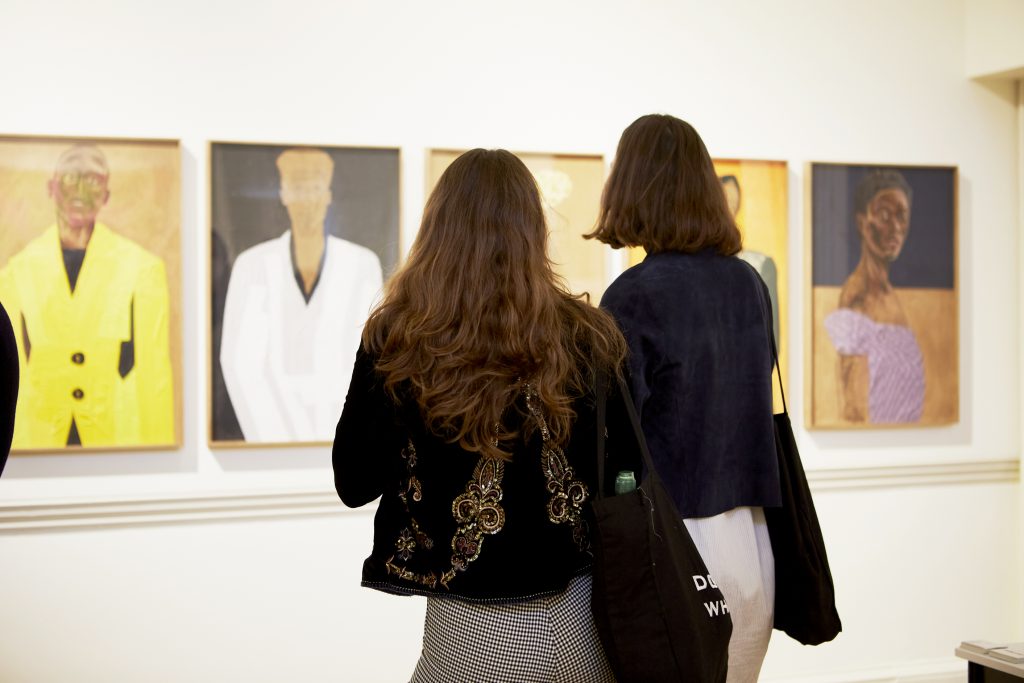
1-54 Contemporary African Art Fair went ahead in London despite the cancellation of Frieze.

Naomi Rea

You know the art world has turned upside down when the satellite fair becomes the only game in town.
London’s Frieze art fairs may be cancelled, but the contemporary African art fair, 1-54, opened to VIPs bright and early on Thursday at Somerset House. With a reduced number of galleries physically present and safety measures including limited capacity, a one-way crowd-flow system, and compulsory face masks in place, it wasn’t exactly business as usual.
Still, the scaled-back fair welcomed 29 galleries with an additional eight included in the digital version of the fair operated by Christies. (A selection of works are also on view at the auction house’s Duke Street Gallery in Mayfair.) The buoyant response to opening day served as a testament to the enduring value of the IRL fair model.
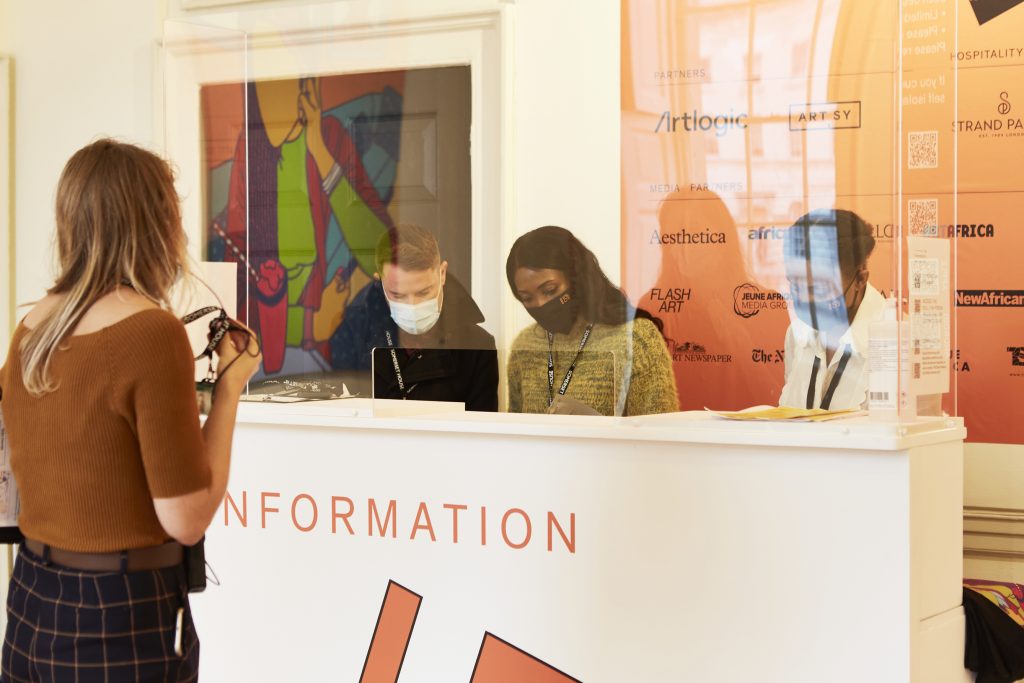
1-54 Contemporary African Art Fair in London. Photo by Rocio Chacon.
The fair’s persistence echoes the scrappiness of the African art market, which has proved somewhat resilient amid a wider market slowdown.
The director of the fair, Touria El Glaoui, believes that African art’s more accessible price points have helped the market remain stable, especially as art sales migrated online during the lockdown.
Still, the director maintains that the physical fair experience is a vital part of a healthy ecosystem. When Frieze was cancelled, some galleries made it clear that they were still keen for a physical opportunity to reach the local collector base in London.
“I personally think that physical fairs are important for the role they play in helping collectors to discover new artists, which they can then buy online later on,” El Glaoui told Artnet News. And with virus cases rising again across Europe, the stakes are high. “I think we will all be suffering if this is the last fair we can do until 2022,” she said.
That’s why the director made sure to cover all her bases. The decision to partner with Christie’s on an online version offered an alternative access point. “We need to go as global as possible and also reach collectors that might feel shy about coming to the fair this year,” El Glaoui said.
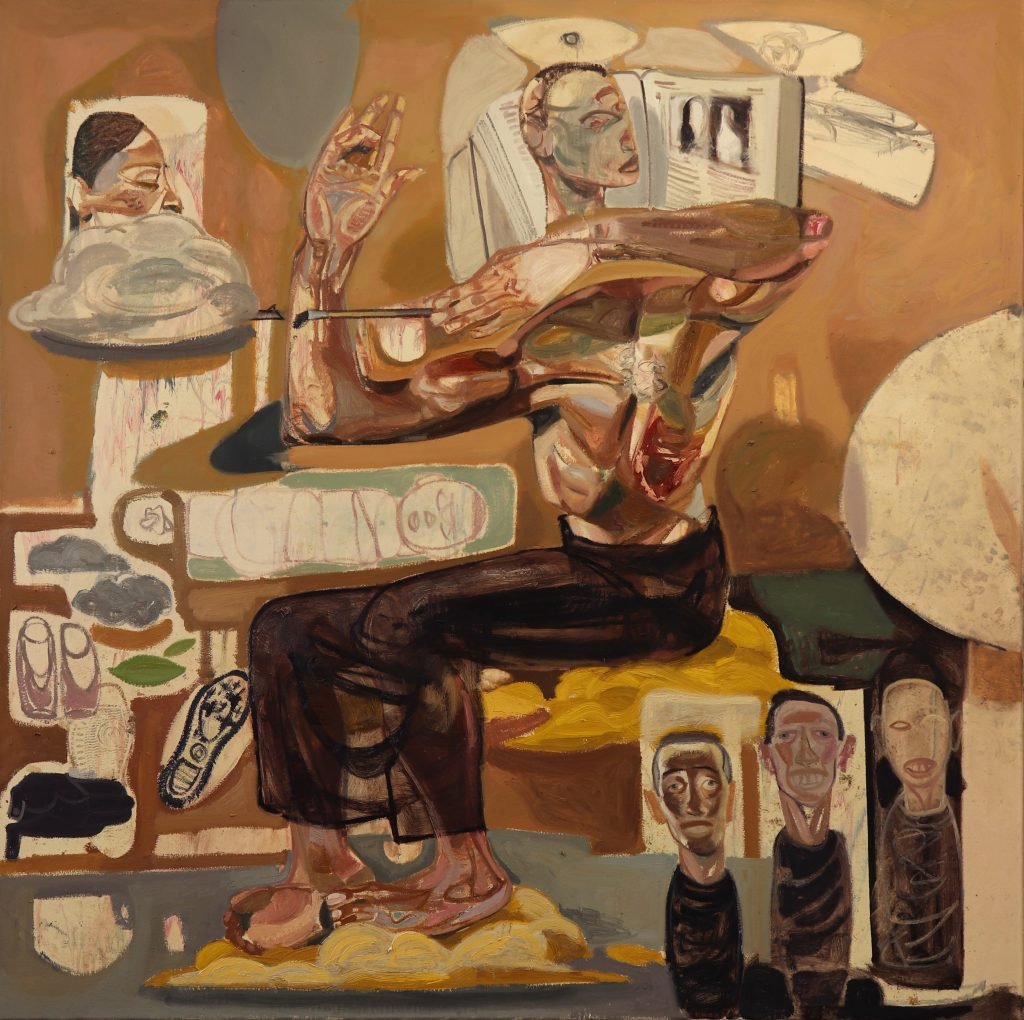
Tesfaye Urgessa, VUPs IX (2019). Courtesy Addis Fine Art.
On opening day, it did not appear as if too many people were shy about coming to the fair. With limited capacity in place, 1-54 quickly sold out of timed tickets. Even at 8:30 a.m. on preview day, there was a small queue of art-hungry visitors forming.
Inside, I spotted Chisenhale Gallery director Zoé Whitley and the London-based African art collector (and co-chair of Tate’s African acquisitions committee) Mercedes Vilardell at the booth of Accra’s Gallery 1957. Collector Vanessa Branson was also seen browsing later in the day.
But convincing people to experience art in person is one thing; getting them to buy it is another. With Frieze reporting steady sales at the top level following its online launch Wednesday, a reasonably upbeat tone was set.
Less expensive and established works began moving swiftly at 1-54. Polartics, a young Nigerian gallery and first-timer at the fair, found buyers for all eight paintings it brought by the Nigerian-Canadian painter Ekene Emeka-Maduka. The works, which range in price from £3,000 ($3,800) for smaller circular canvases to £12,000 ($15,500) for larger ones, are part of a series called “St. Agnes” depicting the artist’s experience at an all-girls’ Catholic boarding school in Nigeria.
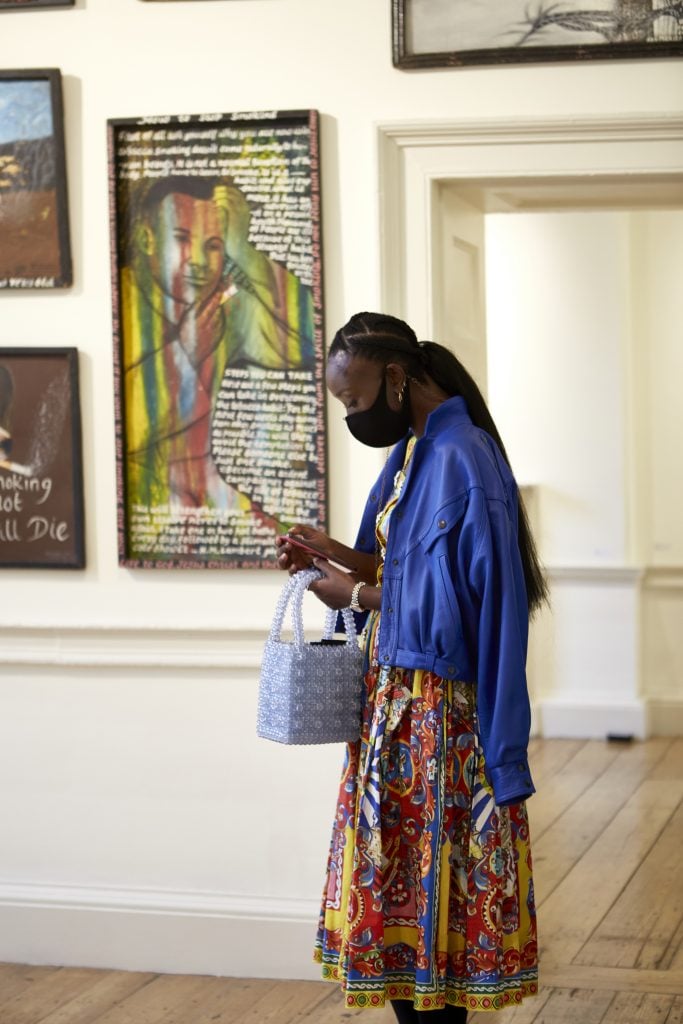
1-54 Contemporary African Art Fair in London. Photo by Rocio Chacon.
Gallery founder Oyinkan Dada, who is the same tender age as the artist—24—explains that private collectors based in Nigeria, the UK, and the US reached out when they heard the gallery was taking part in the fair. (Instagram has also been a big driver of interest, and it doesn’t hurt that the artist already has a celebrity collector—the writer and director Janet Mock bought a work earlier this year.)
Meanwhile, the Accra-based Gallery 1957 sold out its booth at prices ranging from $10,000 to $30,000, with sales split equally between in person and online. Its offerings included portraits on cork board by the Ghanaian artist Serge Attukwei Clottey; they mark a new direction for an artist most closely associated with large-scale works made from stitched together fragments of jerrycans.
With travel uncertain for the foreseeable future, Gallery 1957 is also locking down a space in London’s South Kensington, which will open on October 28.
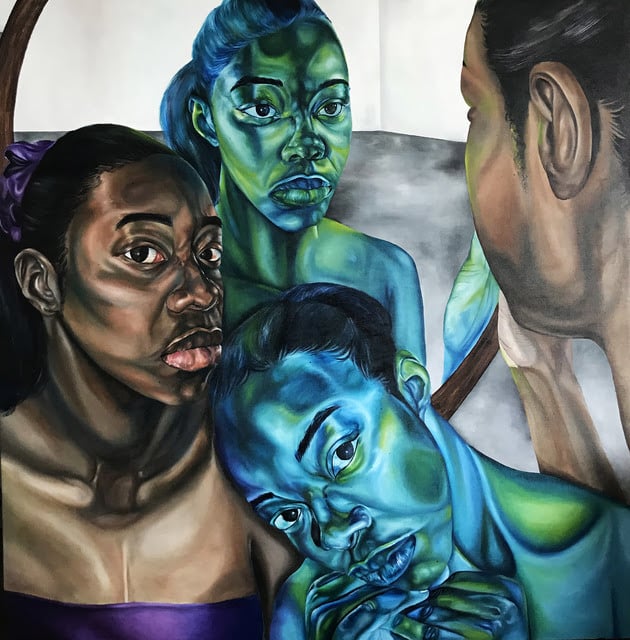
Ekene Emeka-Maduka, Merrily, merrily, merrily, life is but a dream (2020). Courtesy Polartics.
Gallery 1957 isn’t the only one putting down roots in the city. Addis Fine Art, which is focused on artists from Ethiopia and its diaspora, has just opened an outpost in South Kensington at the emerging gallery hub Cromwell Place.
“2020 was meant to be a big year for us,” gallery founder Rakeb Sile told Artnet News. The gallery was due to show at Frieze New York for the first time this year. But after it participated in the Armory Show back in March, art fairs began to fall like dominoes.
Despite the hurdles, the gallery managed to make sales during lockdown, taking part in the online substitutes for Art Dubai, Frieze New York, and Untitled Art Fair, and even meeting a few new clients from Europe and the US. “The experience really helped us get to grips with the online fair world, which I think will stick around,” Sile said.
The gallerist, who sold two works by Tesfaye Urgessa on VIP day, is optimistic that the African art market will continue to grow despite the setbacks wrought by lockdown. “The African art market is still growing because it is still largely undiscovered,” she says. “I think interest will only continue to grow as the art world learns that Africa is a huge continent with a huge variety of cultures and stories and people.”
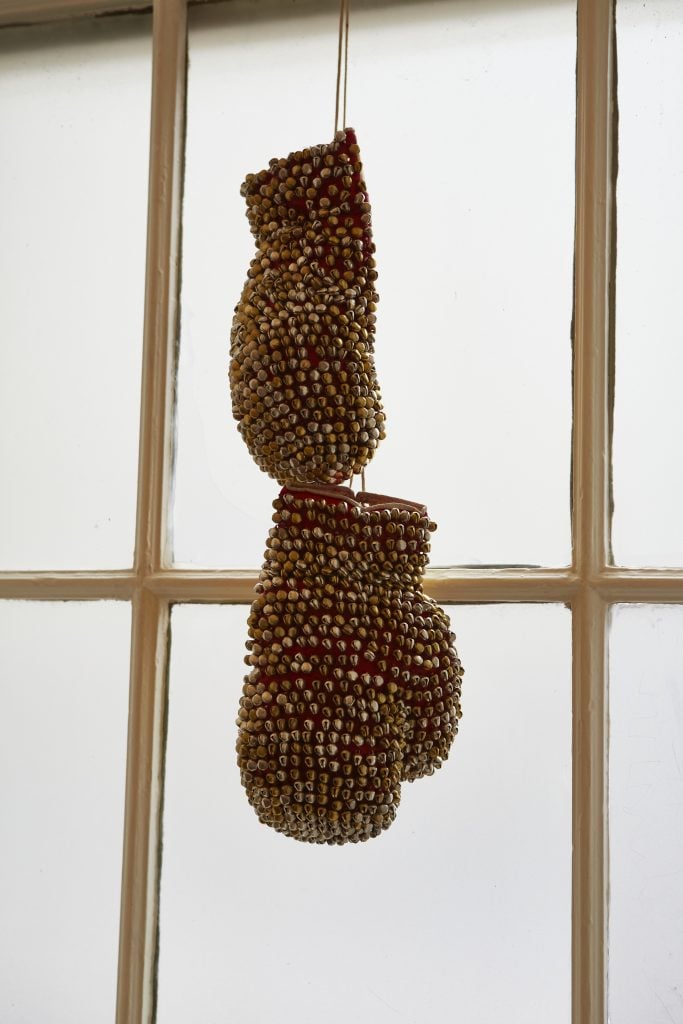
1-54 Contemporary African Art Fair in London. Photo by Rocio Chacon.
Other early sales came from London’s Jack Bell Gallery, which parted with several pieces by the Mozambican artist Gonçalo Mabunda. The Turin-based Luce Gallery said there is already a waiting list for young Cameroonian artist Ludovic Knoth, while the Kampala-based gallery Afriart sold a few works by Sungi Mlengeya. Stacey Gillian Abe and the Caribbean gallery espace d’art contemporain 14N61W sold two works by Yoan Sorin, including a pair of boxing gloves embroidered with bells for $8,000.
By and large, dealers are taking the early buzz as a positive sign, particularly as the London fair tends to see sales trickle in throughout the weekend.
The founder of Afikaris gallery, Florian Azzopardi, posited that the continued interest could be driven by the fact that more people are spending time at home and looking for a pick-me-up. The dealer, who had sold one work by the end of VIP day, said he has seen a particular uptick in demand for positive artworks, like the colorful examples by the 23-year-old Cameroonian artist Moustapha Baidi Oumarou. The artist, who describes himself as a “humanist” painter, comes from a remote area of Northern Cameroon where terrorism is a problem; he considers his optimistic work an exercise in manifesting what he wants to see in the world.
“People are maybe looking for some joy in their lives right now,” Azzopardi said.
1-54 Contemporary African Art Fair takes place October 8 through 10 at Somerset House in London.